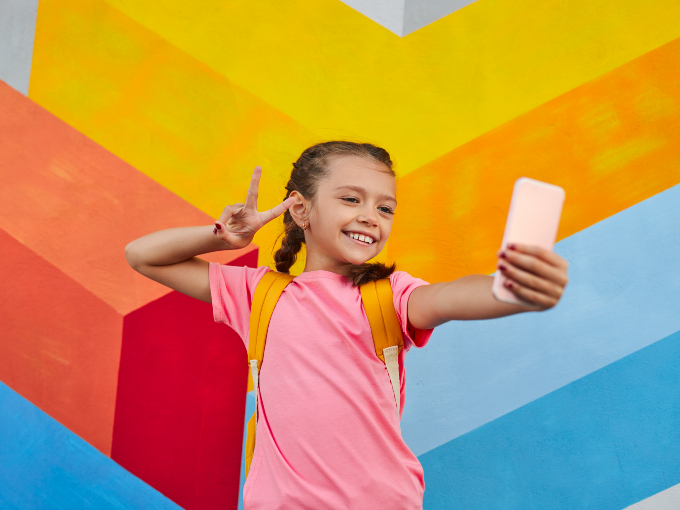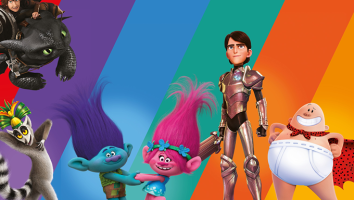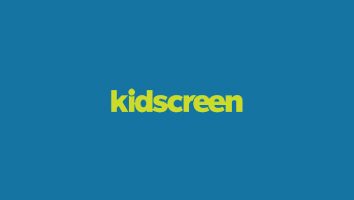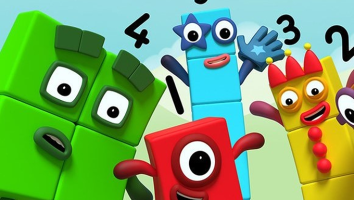By: Peter Robinson
In the digital era, children and young consumers explore a vast array of online destinations, creating unique digital playgrounds where they explore, interact and engage with content. Beyond popular platforms like Roblox, Snapchat, TikTok, YouTube, Giphy and Spotify, these digital playgrounds have also become spaces where brands of all origins seek to connect with their fans of the future.
Understanding how young people experience and interact in these online play spaces is critical to building successful strategies in the years to come. So let’s take a moment to dive into this complex and always-changing world.
Platform play
As of October 2022, digital usage in the US among kids up to age 16 looked like the chart on this page.
Some of these numbers are surprising (TikTok’s rise, in particular), but they reflect two trends coming together—access and agency. According to Netfiles (KidsKnowBest’s annual study looking at global media consumption trends), 50% of kids in the US have a smartphone by the age of 10. At the same time, parental influence in choosing a show to watch drops from 40% at age five to 25% at age six in the US, and continues declining as kids get older.
When agency, skill and access merge, kids begin to develop their own niches.

The rise of the algorithm
In the ’90s, commissioners presented the content they bought on a TV channel, which was exactly that: one channel. As technology changed, the barriers to entry dropped, and content became free and cheap online. But it was hard to find.
And so, in the ’00s and ’10s, the era of the “hunter-gatherer” emerged, and people found content in droves. Random discovery led to viral content like “Charlie Bit My Finger,” which was a huge reward (and dopamine hit) for those willing to seek it out. The same happened on Minecraft, Roblox, podcast channels and music spaces like Spotify—we had to find and spend time curating our own channels. It was the era of the “audience commissioner.”
After more than a decade of finding, curating and muddling, the machine has lots of data now. And it’s curated not by a human commissioner or an audience commissioner, but by an algorithmic commissioner.
Niche tastes
 Our team recently met a group of nine-year-olds who were experts on the TV series Adventure Time, despite the fact that many of them hadn’t watched a single episode! They watch clips on YouTube, TikTok and via GIFs. They know the folklore, Easter eggs and subplots. They relate to the characters and consider themselves fans. We found the same thing with Family Guy, Stranger Things and other shows for the eight to 16 demo.
Our team recently met a group of nine-year-olds who were experts on the TV series Adventure Time, despite the fact that many of them hadn’t watched a single episode! They watch clips on YouTube, TikTok and via GIFs. They know the folklore, Easter eggs and subplots. They relate to the characters and consider themselves fans. We found the same thing with Family Guy, Stranger Things and other shows for the eight to 16 demo.
These kids had found their niche, using it to explore stories and characters that appeal to them on merits they’d defined themselves, and customizing their fandom experience using media options that suit their interests.
There are niches and micro-niches for everyone. And those micro-niches allow young people to find, explore and express themselves on topics that are important to them. According to research that KidsKnowBest and Rebel Girls presented at Kidscreen Summit 2023, social and gaming spaces are the most likely media to promote confidence among girls—more so than TV and streamers. And it’s because of this ability to customize fandom with media experiences that support their passions and interests.
A look at the zero to 16 demographic on American social media reveals a huge range of genres. Fed by kids’ personal interests, emotional needs and social influence, social media is where they go for both learning and entertainment.
But the problem is, data begets data. That means if someone reveals they like turtles or the color green at some point along their user journey, the algorithm will give them more turtles and more green. The algorithm constantly validates decisions they’ve already made—which means that, in theory, if someone enters a show’s “world,” they may never exit it.
Lost and found

This is why it has never been more important for IP owners, producers and other stakeholders to have a sophisticated understanding of the most popular “playgrounds” and how kids use them, and then tailor their discoverability strategies appropriately. And this is why we need to think not only about how we “surface” the niches and habits people have, but also about how we reward hunter-gatherer behavior.
We want to encourage meandering, getting lost and stumbling upon a new point of view. In order to achieve that, it’s important to study not just typical social and viewing metrics or key performance indicators, but also how people in your audience build their own personal narratives around your content. What do they make, like and share? Understanding the sentiment and personal relationships your fans have with your brand is more valuable than total views or subscribers.
One person’s experience could unlock the essence of what makes your fans fans. I remember exploring Lilo and Stitch and finding threads on Reddit, where many people referenced it as part of their growing-up experience and shared how it influenced their behavior as adults.
These deep conversations often take place in Snapchats, through GIFs and via social media. The SpongeBob creator community on Giphy has made SpongeBob one of the most-used and shared characters in the world, among all ages. And animation studios like Gigglebug, which specializes in mobile content, have used this space to experiment with ways to increase reach and play.
As children and young consumers skip across the digital playgrounds of Roblox, Snapchat, TikTok, YouTube, Giphy and Spotify, brands have a chance to seize the opportunity to engage with future consumers in innovative and creative ways. But this can only be accomplished by understanding the distinct features and dynamics of each platform and how it relates to the behaviors of those who use them. So grab some toys and get in the mix!
Peter Robinson is the founder of UK strategic consultancy Gone With, and a specialist in the kids and family media industry for more than 15 years. He consults for KidsKnowBest, a full-service creative agency that’s driven by data and the voices of children and families.
This story originally appeared in Kidscreen‘s August/September 2023 magazine issue.



























